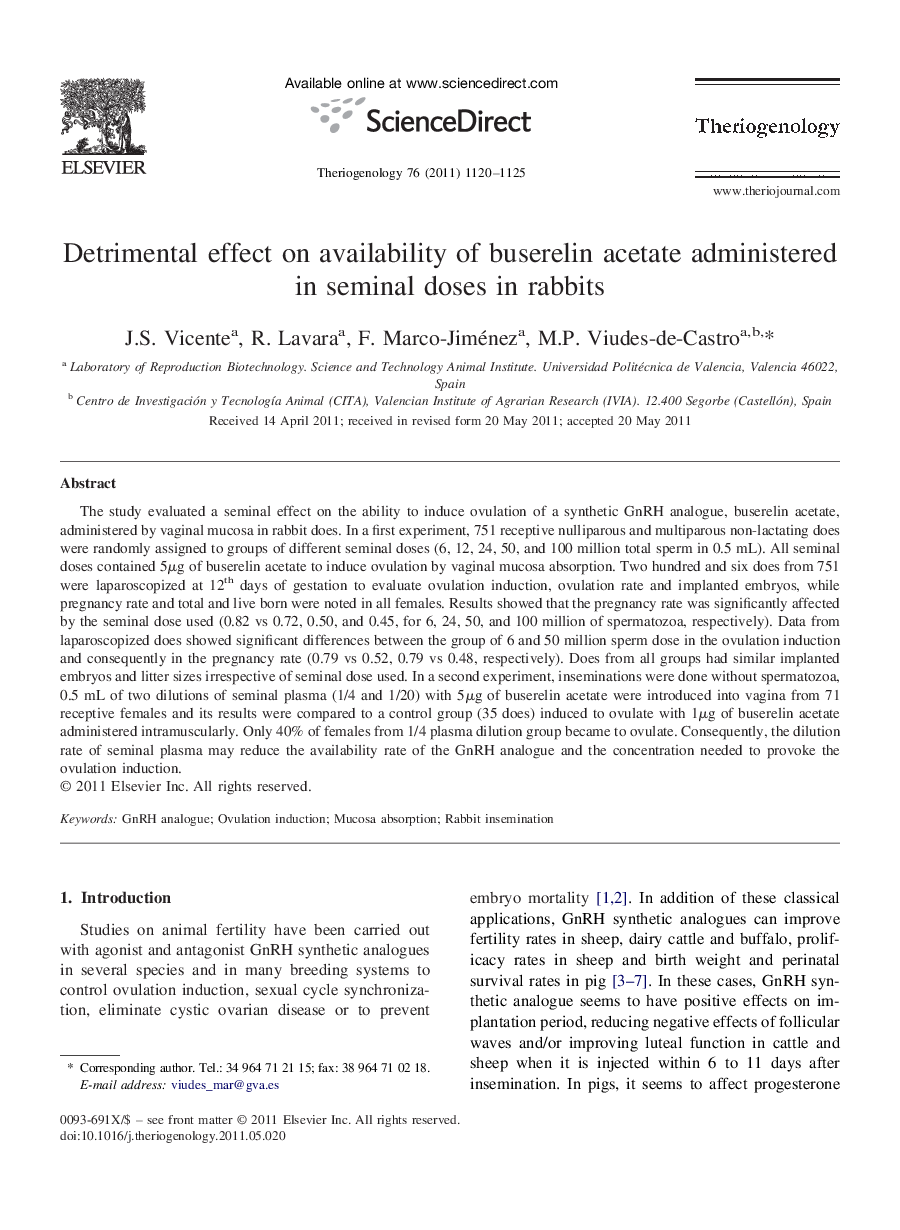| Article ID | Journal | Published Year | Pages | File Type |
|---|---|---|---|---|
| 10892606 | Theriogenology | 2011 | 6 Pages |
Abstract
The study evaluated a seminal effect on the ability to induce ovulation of a synthetic GnRH analogue, buserelin acetate, administered by vaginal mucosa in rabbit does. In a first experiment, 751 receptive nulliparous and multiparous non-lactating does were randomly assigned to groups of different seminal doses (6, 12, 24, 50, and 100 million total sperm in 0.5 mL). All seminal doses contained 5μg of buserelin acetate to induce ovulation by vaginal mucosa absorption. Two hundred and six does from 751 were laparoscopized at 12th days of gestation to evaluate ovulation induction, ovulation rate and implanted embryos, while pregnancy rate and total and live born were noted in all females. Results showed that the pregnancy rate was significantly affected by the seminal dose used (0.82 vs 0.72, 0.50, and 0.45, for 6, 24, 50, and 100 million of spermatozoa, respectively). Data from laparoscopized does showed significant differences between the group of 6 and 50 million sperm dose in the ovulation induction and consequently in the pregnancy rate (0.79 vs 0.52, 0.79 vs 0.48, respectively). Does from all groups had similar implanted embryos and litter sizes irrespective of seminal dose used. In a second experiment, inseminations were done without spermatozoa, 0.5 mL of two dilutions of seminal plasma (1/4 and 1/20) with 5μg of buserelin acetate were introduced into vagina from 71 receptive females and its results were compared to a control group (35 does) induced to ovulate with 1μg of buserelin acetate administered intramuscularly. Only 40% of females from 1/4 plasma dilution group became to ovulate. Consequently, the dilution rate of seminal plasma may reduce the availability rate of the GnRH analogue and the concentration needed to provoke the ovulation induction.
Keywords
Related Topics
Life Sciences
Agricultural and Biological Sciences
Animal Science and Zoology
Authors
J.S. Vicente, R. Lavara, F. Marco-Jiménez, M.P. Viudes-de-Castro,
